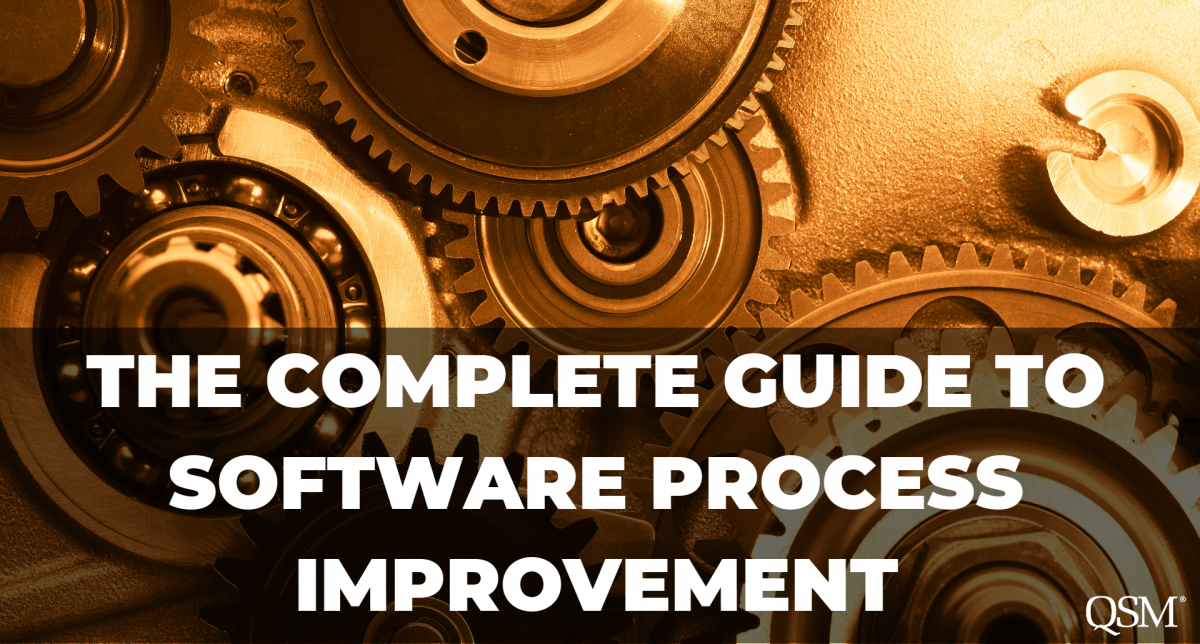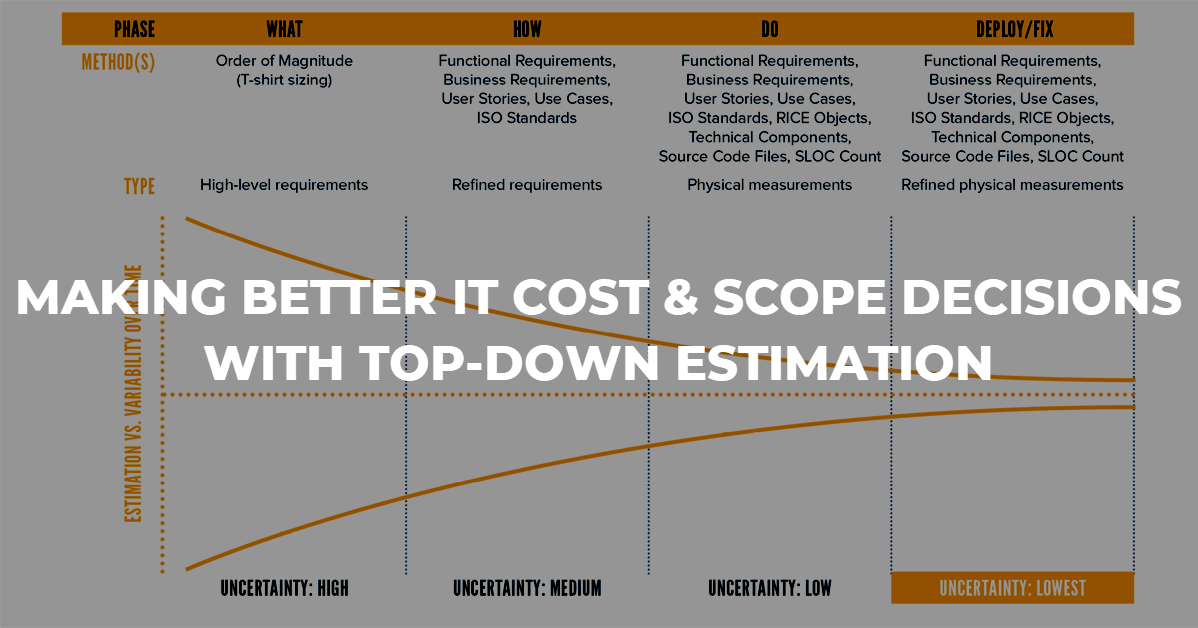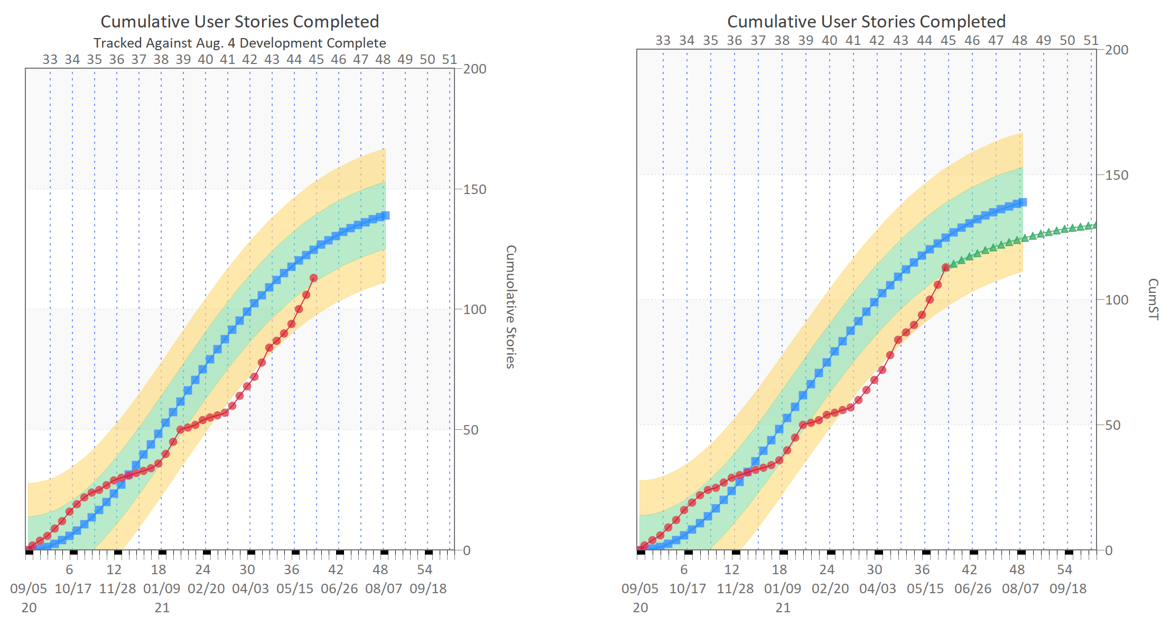Software Estimation Basics: What Is a Top-Down Estimate?
With over 45 years of experience in the software estimation field, you might say we know a thing or two about the subject. This is why we wanted to define key principles with our Software Estimation Basics series. Let's start with a common question we hear a lot: what is a top-down estimate?
What Is Top-Down Estimation?
Top-down estimation is a technique that uses high-level, summary project goals or constraints - scope, cost, schedule, resources, and productivity - to evaluate all possible scenarios to meet a project's goals and the risks associated with each scenario. Top-down estimation is the best approach to employ early in the project and project portfolio planning process when very little is known.
A common misconception about top-down estimation is that it is used solely to produce a ballpark figure for cost. As we'll explain more in this post, good top-down estimates calculate values for key management metrics, not just cost.
A top-down estimate can be generated by anyone who needs to know a software project's budget, schedule, or staffing - project managers, anyone in the PMO, technical architects, cost analysts, and product owners. C-suite executives can leverage top-down estimates when they need to approve project budgets and schedules.





